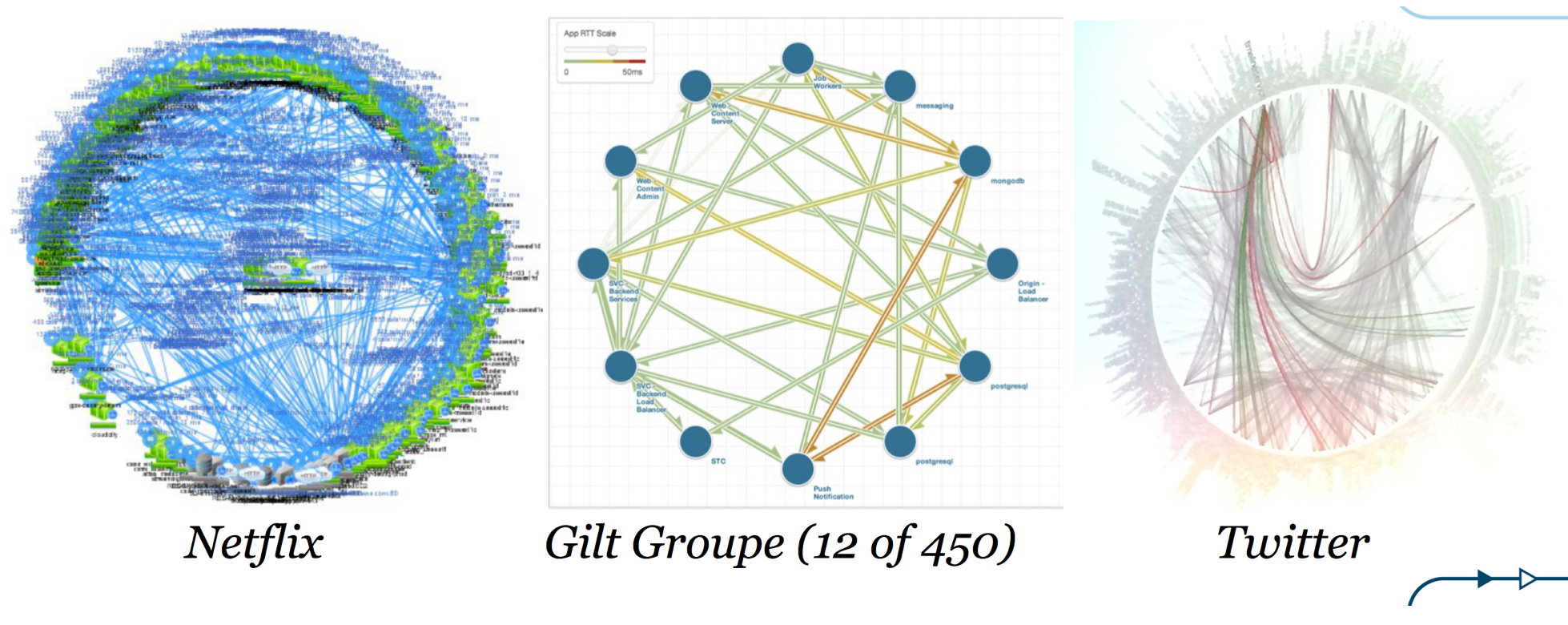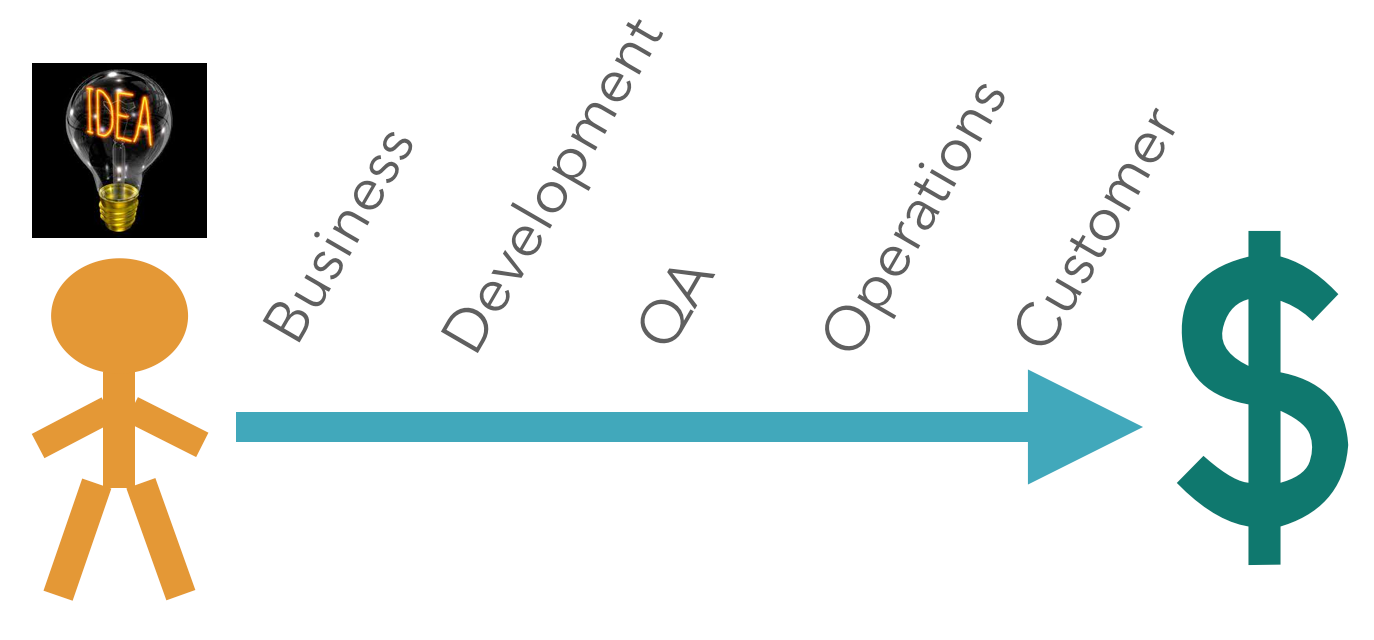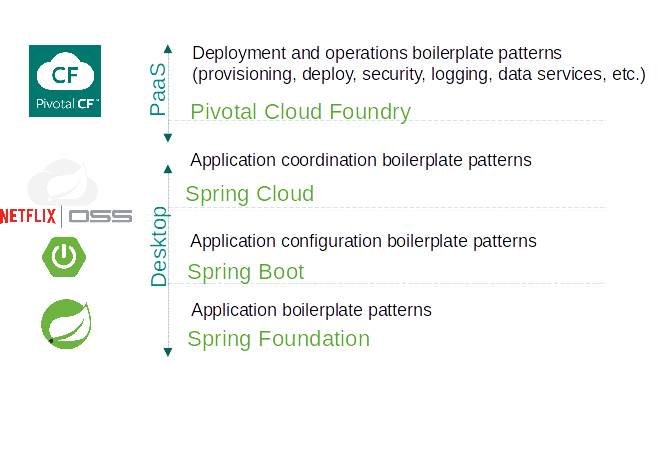
Cloud Native Application Architecture
Dave Syer, 2015Authors
Dave Syer,
@david_syer,
dsyer@pivotal.io
Cloud Native
- What is it?
- Why do we need it?
- How do we do it?
Does This Sound Good?
- Speed
- Safety
- Scale
- Mobility
Not Monoliths…

Not Traditional (ESB-centric) SOA…

But Microservices!

Is There Maybe Some Hype?

Microservice
Loosely coupled service oriented architecture with bounded contexts…
@adrianco
If every service has to be updated in concert, it’s not loosely coupled.
If you have to know about the internals of surrounding services you don’t have a bounded context.
Monoliths
- Modularity dependent on language / framework
- Change cycle tightly coupled → obstacle to frequent deploys
- Inefficient scaling
- Intimidating to new developers (and for old ones)
- Obstacle to scaling feature development
- Requires long-term commitment to stack
Easy but Complex
Microservices
- Modularity based on component services
- change cycle decoupled → frequent deploys
- Efficient scaling
- Individual components easy to understand
- Enables scaling development
- Eliminates long-term commitment to stack
Simple but Hard
Wait, It’s Hard?
No such thing as a free lunch
- Operations overhead
- Devops skill shortage
- Interface / context governance
- Duplication of effort
- Distributed system complexity
- Asynchronous is difficult
- Testability challenges
12-Factor Application Patterns
- Optimized for speed, safety, & scale
- Declarative configuration
- Stateless/shared-nothing processes
- Single binary distribution per process
- Loose coupling to application environment
Microframeworks


- Dropwizard (http://www.dropwizard.io/)
- Spring Boot (http://projects.spring.io/spring-boot/)
Spring Boot
- http://projects.spring.io/spring-boot
- Opinionated convention over configuration
- Production-ready Spring applications
- Embed Tomcat, Jetty or Undertow
- STARTERS
- Actuator: Metrics, health checks, introspection
No Microservice is an Island

Challenges of Distributed Systems
- Configuration Management
- Service Registration & Discovery
- Routing & Load Balancing
- Fault Tolerance (Circuit Breakers!)
- Monitoring and Tracing
- API Aggregation & Transformation
Spring Cloud
- http://projects.spring.io/spring-cloud
- Opinionated convention over configuration
- Common patterns, pre-shaved yaks
- Declarative distributed systems
- Embed Netflix OSS and other popular tools (Zipkin, Kafka, Rabbit, Zookeeper, Consul, Hazelcast, Cloud Foundry)
Phew! Spring Saves the World
Q: There’s a technology solution to all those problems?
A: TL;DR Probably not
Process

- Deliver (Day One)
- Continuously (Day Two and Beyond)
Sociology

Some Practical Advice
Paraphrasing @adrianco:
Get out of the business of infrastructure and
automation (a.k.a. "undifferentiated heavy lifting")
- Internet giants, ratio of app to infra developers = 10:1
- Your business (= your apps) is special, your infrastructure is not
- Don’t try to differentiate on something that is a commodity
You’re Going to Need a Platform
Platform features:
| Infrastructure | Application |
|---|---|
Environment Provisioning |
Distributed/Versioned Config |
On-Demand/Automatic Scaling |
Service Registration/Discovery |
Failover Resilience |
Routing/Load Balancing |
Routing/Load Balancing |
Service Integration |
Data Service Operations |
Fault Tolerance |
Monitoring |
Asynchronous Messaging |
Anatomy of a Cloud Platform

What is Cloud Native?
If you make the rule that you own the code that you write, you soon get to know what #cloudnative means!
@david_syer
Links
/